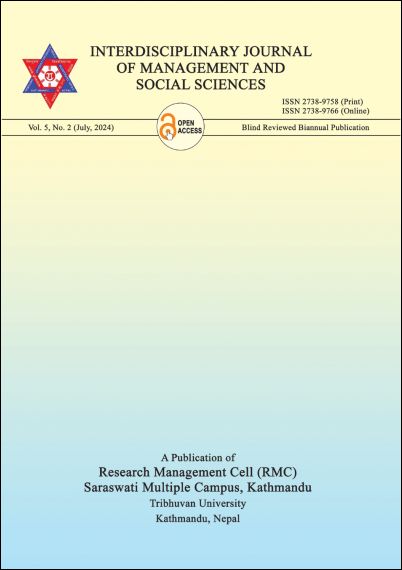Transition of the Labour Market in Nepal: Challenges and Opportunities
DOI:
https://doi.org/10.3126/ijmss.v5i2.69462Keywords:
Labor market transition, sectoral shifts, poverty alleviation, rural poverty, international migration, employment challengesAbstract
The objectives of this study explore the transitions in Nepal's labor market, focusing on the shift from traditional agriculture to more diversified sectors, including manufacturing and services. It highlights the socio-economic factors driving these changes, the challenges faced by the workforce, and the implications for poverty alleviation and economic growth. The research method is based on a comprehensive analysis of labor market data, poverty profiles, and sectoral contributions to Nepal's economy. It incorporates data from national surveys, government reports, and international sources to examine employment trends, sectoral shifts, and labor productivity. The finding of this research is the study reveals a significant transition in Nepal's labor market, with a reduction in agricultural employment from 39% in 2003 to 24.6% in 2024, coupled with an increase in the service sector's contribution to the economy. Despite these shifts, agriculture remains the largest employing industry, albeit with low productivity and underemployment. The informal sector dominates, accounting for over 60% of total employment. Rural poverty and income inequality persist, with a Gini index of 0.30 in 2023, reflecting disparities between urban and rural areas. International migration has emerged as a crucial factor, with remittances contributing significantly to household incomes. The conclusion of this study is Nepal's labor market is undergoing rapid transformation, driven by globalization, technological advancements, and international migration. However, challenges such as skill mismatches, gender disparities, and high youth unemployment require targeted policies. Enhancing vocational training, fostering entrepreneurship, and formalizing the informal sector are essential for improving employment outcomes and promoting economic growth.
Downloads
Downloads
Published
How to Cite
Issue
Section
License

This work is licensed under a Creative Commons Attribution-NonCommercial 4.0 International License.

